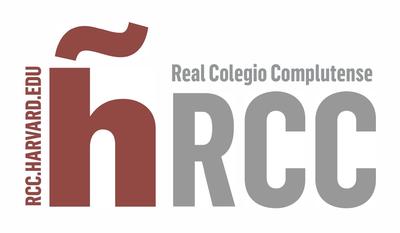Co-Chairs: Jose Manuel Martinez Sierra (RCC Director, Jean Monet ad personam Professor); and Julio Lumbreras (RCC Fellow, Visiting Scholar at Harvard's Mossavar-Rahmani Center for Business and Government at Harvard's Kennedy School of Government)
Innovation and Internationalization are the key factors of success in the XXI Century for Higher Education Institutions (HEI). According to the latest OECD Education at a Glance report, (OECD, 2014. p. 34) “more than 4.5 million students were enrolled in tertiary education outside their country of citizenship (…) a more than fivefold increase” in the last 22 years. If the current trend continues, the number of international students could reach 8 million before 2030.
Trend of the number of students enrolled outside their country of origin 1975-2030*

In 2012 the proportion of international students as a percentage of total tertiary enrolment in OECD countries was an 8.4%. Leading HEI usually have a bigger share of International Students. For Example, at Harvard University the proportion of International Students is 23% (http://www.hio.harvard.edu/statistics), mostly graduate students[i]. Being able to attract the best candidates from all over the world implies innovative actions to adapt programs and teaching methodology to more diverse students, as well as to achieve recognition from foreign institutions and to build a reputation on quality.
The issue of developing the right strategy to attract not only a greater number but also the best international students is critical for HEI, and it is being analyzed by University Associations[ii], public institutions[iii], consultant firms[iv] and academics[v].
Despite the spectacular exponential growth of student and scholar international mobility, internationalization has become much more complex than only attracting foreign talent to existing programs. In fact, other important trends in Higher Education Internationalization and Innovation are, for example, international branch campuses (IBC) (the so called “Third Wave” of internationalization[vi]), international universities, joint degrees and online and blended learning programs, including Massive Open Online Courses (MOOCs).
All these initiatives rise concerns on matters as “the academic freedom and the free exchange of ideas, scholarly rigor and excellence, quality education, and the dignified treatment of all people in a university community remain at the center of university values” as pointed out by the Association of American Universities[vii].
The Study Group on Internationalization & Innovation in Higher Education (i2HE) aims to study all before mentioned phenomena from a multidisciplinary methodology, combining practitioners’ and academics’ perspective, and applying it to interesting case studies in the following areas:
- Strategic plans for Internationalization.
- Strategies and impacts of establishing successful Joint Degrees and International Branch Campuses.
- Ranking positioning strategies and their impacts.
- Teaching Innovation Strategies.
- University Branding and Marketing Strategies.
The i2HE conducts a yearly Seminar on Internationalization and Innovation of Higher Education Institutions and ad hoc Workshops with leading academics and practitioners. The first Seminar was held in May 29th 2015.
RCC University Members and Higher Education Institutions are welcome to submit a proposal for the Study Group to perform a case study analyzing their institutional strategies. Scholars and practitioners are welcome to submit papers for peer-review and discussion in 2016 Seminar or to promote a Workshop on a specific topic related with the Study Group.
--------------------------
[i] The proportion of undergraduate international new students admitted for 2018 in Harvard College is 11% https://college.harvard.edu/admissions/admissions-statistics
[ii] E.g. Universities UK (2014): International Students in Higher Education: The UK and its Competition. [electronic report] Available at: http://www.universitiesuk.ac.uk/highereducation/Documents/2014/InternationalStudentsInHigherEducation.pdf [Accessed 1 May 2015].
[iii] E.g. British Council. (2004). Vision 2020 Forecasting international student mobility: a UK perspective. Australian Education International (AEI) 2003b, Why choose Australia? Insights from a Survey of International Students who Commenced Study in 2000, Australian Government.
[iv][iv] E.g. HOBSONS (2014): Beyond the Data: Influencing International Student Decision Making. [Electronic Report]. Available at: https://static.eloqua.com/Web/HobsonsInc/%7B7e04f1c4-d8e2-494a-837b-08369d29a458%7D_Beyond_the_data.pdf [Accessed 1 May 2015].
[v] E.g. Agrey, L. and Lampadan N. (2014): Determinant Factors Contributing to Student Choice in Selecting a University. Journal of Education and Human Development. 3 (2), pp. 391-404. Joseph, M., & Joseph, B. (2000). Indonesian Students’ Perceptions of Choice Criteria in the selection of a tertiary institution: Strategic Implications. International Journal of Educational Management, 14, pp. 40-44. Kinzie, J., Palmer, M., Hayek, J., Hossler, D.; Jacob, S. & Cummings, H. (2004) Fifty years of college choice: Social, political and institutional influences on the decision-making process. New Agenda Series. 5, pp. 1-76. Mazzarol T., Soutar G.N. (2008). Australian Educational Institutions’ international markets: A correspondence analysis. International Journal of Educational Management. 22, pp. 229-238.
[vi] Mazzarol, T., Soutar, G.N., Seng, M. (2003) The third wave: future trends in international education, International Journal of Educational Management, 17 (3), pp.90 – 99.
[vii] Asociation of American Universities (2014): Principles and Guidelines for Establishing Joint Academic Programs and Campuses Abroad. [electronic document]. Available at https://www.aau.edu/publications/reports.aspx?id=6900 [Accessed 1 May 2015].
| sepie-eng_internationalization_research.pdf | 2.16 MB |

